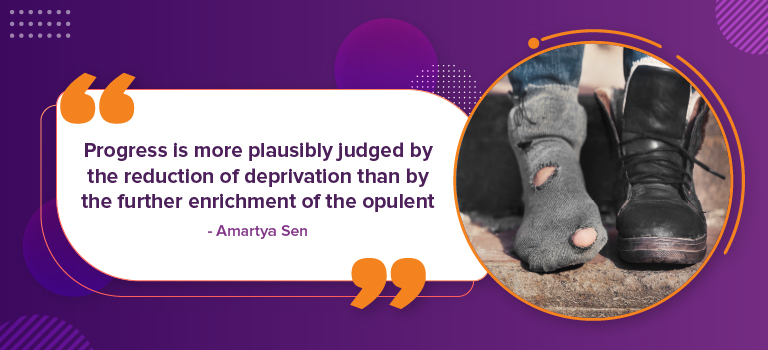
TABLE OF CONTENTS
1. Swachh Vayu Sarvekshan 2. ‘Make in India’ completes 8 years

Syllabus: GS 3, Environment.
Prelims: Swachh Vayu Survekshan.
Mains: Environmental conservation.
Context: Guidelines for ‘Swachh Vayu Sarvekshan- Ranking of cities’ was released.
Details:
- ‘Swachh Vayu Sarvekshan – Ranking of Cities’ was released under the National Clean Air Programme (NCAP).
- Under Swachh Vayu Sarvekshan 131 cities of India would be ranked for implementing City Action Plans. These City Action Plans are prepared under the ambit of the National Clean Air Programme (NCAP) for reducing air pollution upto 40% by the year 2025-26.
- The cities will be classified into three groups on the basis of population:
- The first group consists of cities with a population of more than 10 lakh. 47 cities belong to this group.
- The second group consists of cities with a population between 3 to 10 lakhs. There are around 44 cities belonging to this group.
- The third group comprises 40 cities with a population of less than 3 lakh.
- Under the guidelines, cities are required to undergo self-assessment as per the framework given on the PRANA online portal. This assessment is carried out every year.
- The cities should report the implementation of various activities/schemes like solid waste management, construction and demolition waste management, and regulation of vehicular and industrial emissions.
- On the basis of self-assessment and third-party assessment, the Three best-performing cities belonging to each group will be awarded a cash price.
- This will promote constructive competition and cities will implement measures to improve air quality in the spirit of competitive federalism.
- It will also provide a tool for cities to plan their actions.
- It should be noted that cities are not ranked on the basis of air quality parameters, but are ranked on the actions taken by the cities in different domains. The actions taken by the cities would eventually result in the improvement of air quality.
2. ‘Make in India’ completes 8 years
Syllabus: GS 3, Indian Economy
Prelims: Make in India programme.
Mains: Indian economy and issues related to planning, mobilization of resources etc.
Context: Make in India completes 8 years of implementation.
Details:
- Make in India is the flagship program of the Government of India which was launched in 2014. On 25th September 2022, it completed eight years.
- The main objective of the program was to encourage innovation, ease investment, enhance skill development, and build a best-in-class manufacturing ecosystem.
- Make In India has registered substantial accomplishments in nearly 27 sectors. Strategic sectors like the manufacturing and service sector are also included under its ambit.
- The Government of India adopted a liberal and transparent policy to attract foreign investment. For instance, the majority of sectors are open to Foreign Direct Investment (FDI) under the automatic route. This has resulted in increasing the FDI inflows in India reaching the highest ever FDI at $83.6 billion in 2021-22. The sources of these FDI are nearly 101 countries that have invested across 31 states/UTs and around 57 sectors.
- On the back of economic reforms and Ease of Doing Business in the past few years, India is poised to attract US$ 100 Bn FDI in the current Financial Year (2022-23).
For more information on Make in India, read here: Make In India – Initiatives, Aims, Advantages & Challenges [UPSC Notes GS-III]
Measures to strengthen Make in India:
- Several measures were taken by the Government to leverage the Make in India programme. These include:
- Amendments to laws
- Liberalization of rules and regulations through rationalization, decriminalization, and digitization.
- Cost reduction and promotion of the ease of doing business.
- Moreover, Labour reforms were also considered. Labor reforms brought flexibility in hiring and retrenchment procedures.
- The measures to boost manufacturing and investments also include a reduction in corporate taxes, public procurement orders, and a Phased Manufacturing Programme.
- Other Specific measures to complement Make in India include:
- The Public Procurement (Preference to Make in India) Order 2017 to encourage domestic manufacturers’ participation in public procurement activities of the country.
- National Single Window System (NSWS) launched in 2021 aims to provide a single digital platform to investors for approvals and clearances.
- Production Linked Incentive (PLI) scheme which was launched in 2020-21. It was launched to incentivize domestic production in strategic sectors. Currently, it covers 14 key sectors.
- The One-District-One-Product (ODOP) is another initiative in this direction with a vision to promote the production of indigenous products from each district of India and provide a global platform to the artisans and manufacturers of handicrafts, handloom, textiles, agricultural and processed products, etc. This will further boost the socio-economic growth of various regions of the country.
Read previous PIB here.
September 24th, 2022, PIB:- Download PDF Here

Comments